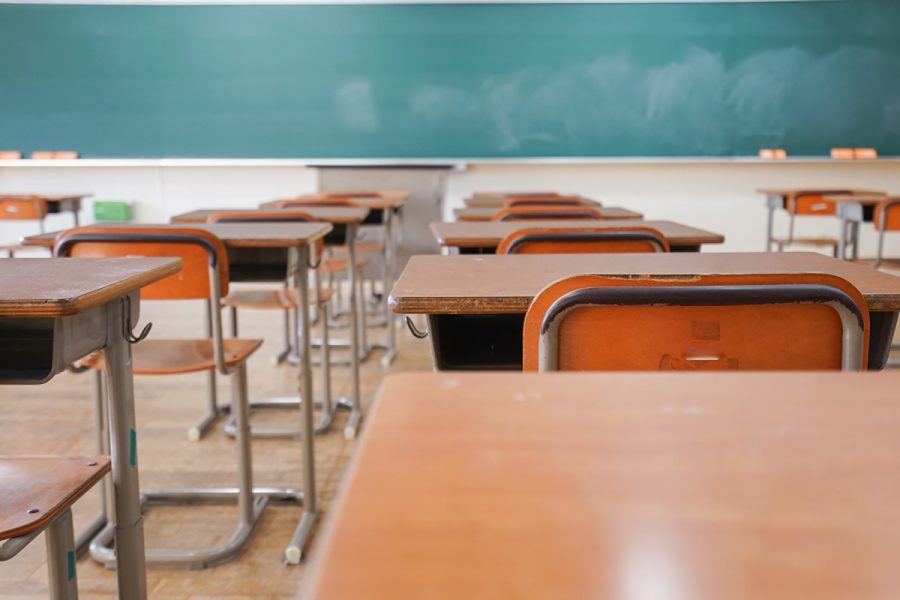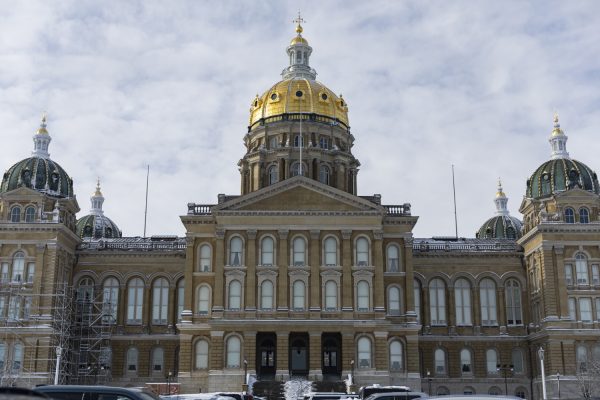Opinion | Gaps in literacy between Black and white students need to be addressed
We need to address K-12 achievement gaps by catering educational opportunities to minorities.
September 29, 2021
Literacy continues to be a privilege that many Black and Brown students are not given the opportunity or resources to obtain. Schools have tried to address the achievement gap between their white and Black student populations with minimal success, prompting initiatives like the 1619 Freedom School.
Nikole Hannah-Jones, the Pulitzer-prize winning journalist who created the 1619 Project, announced the start of the 1619 Freedom School and literacy program in Waterloo on Twitter earlier this month. The school will focus on addressing literacy for fourth and fifth-graders in Waterloo Community Schools and will accept any student based on their needs.
While literacy can seem like a basic — almost inherent — skill, many Black and Brown students do not have the same experience. Throughout generations, literacy skills were barred from being taught to Black Americans. In addition to a lack of access for Black people, literacy is a skill we are still learning how to best teach and assess.
Sheritta Stokes, the co-director and curriculum coordinator of the 1619 Freedom school, grew up in Waterloo with Nikole Hannah-Jones. She is also a teacher at Cunningham Elementary school. Stokes worked alongside a team of people including Hannah-Jones to create the 1619 Freedom School.
“Most research shows Black students learn better by not only teachers that look like them but material that reflects them,” Stokes said. “The 1619 Freedom school is a free tutoring program for any student who is two years behind in their fourth or fifth grade reading level, but we are focused on closing the achievement gap for Black kids.”
Studies have shown Black students who have Black teachers typically have better outcomes. Having a Black teacher is correlated with Black students experiencing less ostracization in the classroom and disciplinary action.
Another study found Black students exposed to a Black teacher in their k-12 education are 13 percent more likely to get their high school diploma and 19 percent more likely than their same-race peers to go to college.
Though Waterloo has a large Black population, only 6.88 percent of full-time teachers are minorities. While this number is small, this is progress for the district, and Waterloo has the highest number of minority teachers in the state.
When it comes to curriculum and getting kids excited to learn it is important that the space they are learning is exciting and new. Along with creating a physically nurturing environment the material the kids will be engaging with will reflect Black lives and stories of empowerment.
“Many times when programs are put together for Black kids, it’s always a piece together project because that’s usually what’s free. We will have a completely brand new space with brand new furniture and murals that represent Black kids, it’s a special space designed for them,” said Stokes.
The NAEP reports card is the statewide method of assessing literacy and math skills in students from fourth, eighth, and twelfth grade. This exam will be used by the 1619 Freedom School to track their students’ progress as well.
The latest data for the NAEP report card comes from 2019. The average eighth grade reading score for white students in Iowa was nearly proficient with a score of 266. In stark contrast, the average score for Black students in Iowa was below basic with a score of 236. The statistics clearly display a need to address literacy in Black students.
COVID-19 is also affecting teaching and outcomes in students especially, for minorities.
The Office for Civil Rights made observations through the pandemic about the effect the pandemic had on education. They found disparities in K-12 education between white students and students of color have worsened. This could be attributed to additional technological barriers and other things that make it harder for students to engage.
Lack of access to resources remains a reason literacy in education is a privilege not afforded to many Black students. With COVID-19 exacerbating these achievement gaps, community school districts should look to programs and curriculums like the 1619 Freedom School.
Growing up without any representation or identities that reflect your own in your education can be a detrimental experience. The experience Stokes and Nikole Hannah-Jones had in Waterloo influenced their drive to address educational disparities between white and Black students.
“I grew up with a mixed school experience in Waterloo. West High was the first time I had taken a Black history class. I know the impact knowing Black history has from that experience,” Stokes said. “It was really eye-opening to learn that we were more than just slaves being beaten, I learned about people inventing and doing things. It’s a different experience learning about those things when you grow up in a world where Black is separate.”
The curriculum for the 1619 Freedom School will become public once it is done so other school districts or teachers have access to the material. While the Freedom School is private and has free range to choose the material their students will use, it is completely separate from the 1619 Project.
If educators are committed to closing the achievement gap and improving literacy for Black students they need to look into fostering an environment that represents these populations, including recruiting teachers of color.
Columns reflect the opinions of the authors and are not necessarily those of the Editorial Board, The Daily Iowan, or other organizations in which the author may be involved.














